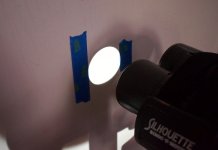Binocollector
Well-known member

I already did that with many binos before -- however not actually directly comparing the different models. Might have to do that.You can get a good idea of the Fov by shining a phone torch through the eye piece of each and seeing how wide the projected circles of light are on a wall or similar.
I am still very impressed with my "skeleton" bino. Wider FoV than the Kowa BDII and for my eyes better panning behaviour. If only the eye-relief were a little better but there is always a price to pay. Until I might one day splurge out the big bucks for a wide angle alpha, the J-B93 will be my "go to" EWA low magnification bino.
The is also a 10x30 version with 7.5° FoV which is also pretty impressive. Might have to get one of those, too.







